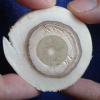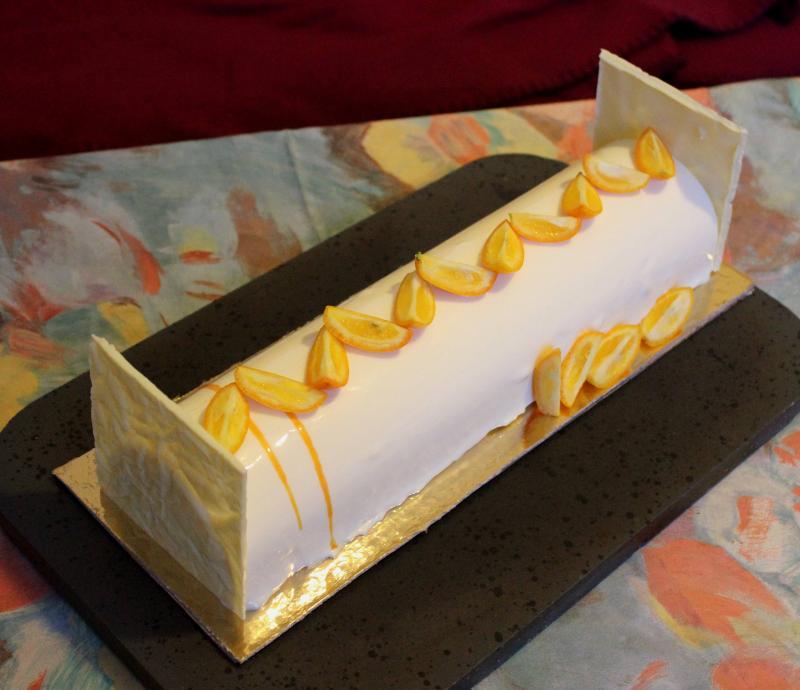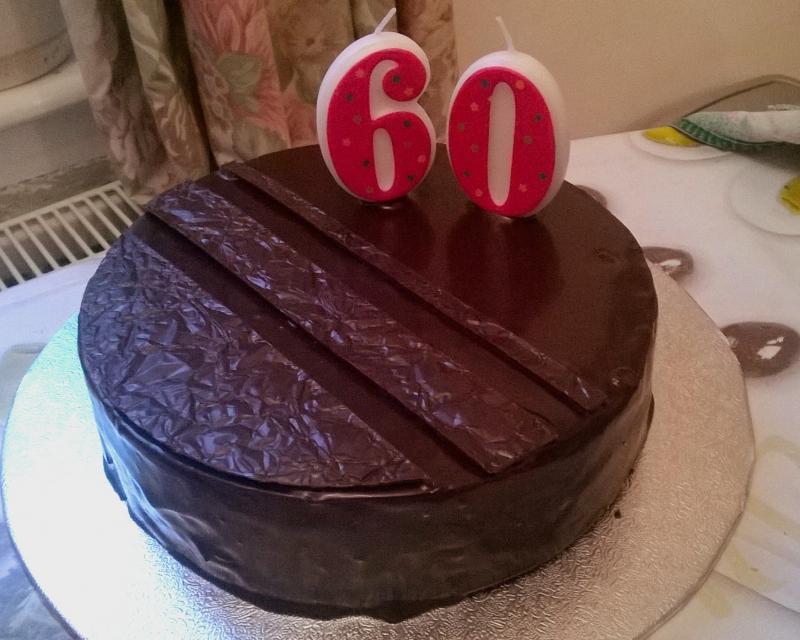-
Posts
838 -
Joined
-
Last visited
Content Type
Profiles
Forums
Store
Help Articles
Everything posted by jmacnaughtan
-
Isigny butter is fantastic. I don't think it's possible to reproduce it- a lot of the character comes from the region, the diet the cows are fed, the culturing and churning techniques etc. It's similar to wine, the terroir has a lot to do with the flavour and quality.
-
In France, there are stricter definitions of what you can sell as butter, for example it has to have around 82% fat. The range of butter available here is fantastic, the best I've had is the unpasteurized you get at Monoprix... Also, Breton butter with salt crystals is pretty damn good too. ETA: a useful tip- avoid any artisanal, small-farmer butter that is sold in the same cabinet as cheese. Butter picks up odours incredibly easily.
-
I originally posted this in the Daily Sweets thread, but it belongs here too A nice big citrus birthday bûche. Citrus Bûche Almond financier Grapefruit confit Mineola crémeux Lemon mousse White glaze White chocolate, kumquats
-

Your Daily Sweets: What Are You Making and Baking? (2015)
jmacnaughtan replied to a topic in Pastry & Baking
-

Your Daily Sweets: What Are You Making and Baking? (2015)
jmacnaughtan replied to a topic in Pastry & Baking
A nice, big 16-person bûche for a birthday party Citrus Bûche Almond financier Grapefruit confit Mineola crémeux Lemon mousse White glaze White chocolate, kumquats- 487 replies
-
- 17
-

-
If you want to keep it really simple, you could just do a plain white icing. Make a template of whatever design the kids like out of cardboard or plastic, then dust or paint it over the top. For kids' birthday cakes, you don't even really need a design/decoration. Just make some sort of icing or glaze and make sure you get the right number of candles on top If you need a reliable glaze or icing recipe, I can pass you one of mine.
-
Sound to me more like an entremet-style dessert- a "croustillant" is generally a base made with some sort of chocolate and pailleté feuilletine (crushed crispy crèpes). I've never heard of this particular dessert, but from its name it sounds fairly modern. There is, however, a very classic dessert, the "Poire Caramel", which may be what you're after. According to Christophe Felder, it's two thin layers of biscuit chocolat with caramelized pears, caramel and caramel mousse. If you added a feuilletine element and used salted butter, you may be approaching what you're after. Edited for spelling.
- 1 reply
-
- 1
-

-

Your Daily Sweets: What Are You Making and Baking? (2015)
jmacnaughtan replied to a topic in Pastry & Baking
Both of them look interesting, I'll have to give them a go. Thanks for those! -

Your Daily Sweets: What Are You Making and Baking? (2015)
jmacnaughtan replied to a topic in Pastry & Baking
-

Your Daily Sweets: What Are You Making and Baking? (2015)
jmacnaughtan replied to a topic in Pastry & Baking
"Left-over cookies". I don't understand this term. -
Nice roast chicken. I do essentially the same thing, but debone it according to Jacques Pépin by slitting it up the back, then tying it up when it's done. It's also a good way of preparing the chicken for a ballotine. Taking out the wishbone is dead easy though- it just takes two cuts and a pull. Thread the knife under the top of one of the wishbone "legs" and cut all the way down through the joint. Repeat, then pull it out.
-
-
With bread baking, I'd agree with you. With pastry and pretty much all the non-bread areas of baking, if you don't have a reliable recipe, good scales and good techniques, then your product is going to suffer.
-
Bring it to the boil with the pod, leave it to sit as long as possible, put it in the fridge when it's cool enough. Make sure you scrape the stuff inside the pod out before discarding it. Bring it back to the boil before using it. Edited for spelling.
-

Your Daily Sweets: What Are You Making and Baking? (2015)
jmacnaughtan replied to a topic in Pastry & Baking
Over the holidays, I was asked to knock up a birthday cake for "between 10 and 20 people"... So I made the densest cake possible- three layers of crème de cacao and rum soaked sacher sponge and a tonne of ganache, with a chocolate glaze and chocolate décor. The finish is a bit rough, but it was made in an unfamiliar kitchen using fairly basic equipment.- 487 replies
-
- 13
-

-
I do the opposite- I prefer a dry one because it's so much faster. But you're spot on with the rest time- if you're doing a crème caramel, you really have to let it rest a while.
-
Interesting discussion, but it seems a little odd that you'd buy dried yeast in France. Every bakery here uses blocks of fresh yeast, and when you want to buy some for home use, you can normally pick up a cube from your local bakery. It works great, I've never had a problem with it. It's also much easier to tell whether it's OK to use or not.
-
Looks tasty. I wouldn't go overboard with toppings and garnishes though; you're trying to highlight the foie gras. A few Maldon or fleur de sel salt crystals work perfectly, or maybe a dab of chutney.
-

Your Daily Sweets: What Are You Making and Baking? (2015)
jmacnaughtan replied to a topic in Pastry & Baking
The galettes look great. How much rise do you expect? I prefer to dock them heavily to keep the pastry as fine as possible. -
I know this is a little late, but might be handy for future reference. The most reliable way I've found to do millefeuilles are to press the puff pastry between two heavy sheet pans (lined top and bottom with paper) and bake like that. You'll get perfectly even, flat pastry and the metal will help give it good colour. For the cream, there's a piping nozzle that works really well- the end is sort of letter-box shaped and it lets you do very even layers incredibly quickly. It looks like this one, but flat on both edges: http://www.sibo-sibon.com/douilles-poches-a-douille/1244-douille-wilton-789.html. Hope this helps.
-
Pâte sucrée is always made using the creaming method. If you use the cutting method, it becomes pâte sablée.




